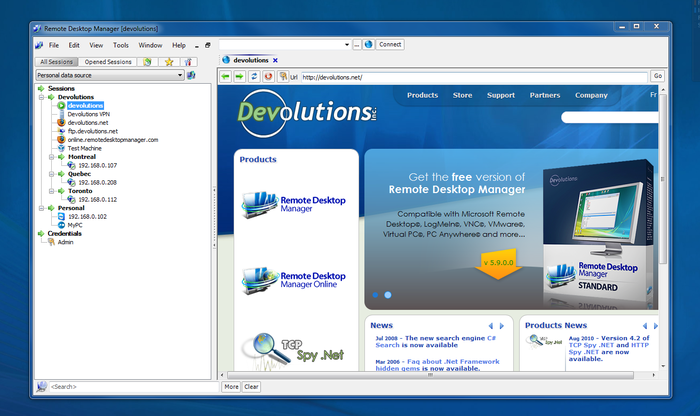


It proxies incoming RDP traffic (on port 443) to the Remote Desktop Session Host (RD Session Host) servers on port 3389. The RD Gateway functions as an RDP proxy. Microsoft Remote Desktop Gateway (RD Gateway) is used to safely publish a Remote App of Full Desktop over the internet. These servers must be added to the LoadMaster to start load balancing Web Access.Ģ.1.2 Load Balancing Remote Desktop Gateway RD Web Access preferably runs on port 443 to leverage SSL security and is, by default, accessed by browsing to /rdweb.Īfter your RD Web Access server has been installed, you can use the Remote Desktop Management Services (RDMS) console as part of the Server Manager to retrieve the URLs of the RD Web Access servers that are part of the deployment. RD Web Access is a website running on Internet Information Server (IIS). Microsoft Remote Desktop Web Access (RD Web Access) is used to publish Full Desktops as well as Remote Apps and make them available from a website and a web feed. 2.1.1 Load Balancing Remote Desktop Web Access The sections below discuss the various scenarios in which the LoadMaster can be used to load balance RDS to. The LoadMaster can be configured to load balance those roles. RDS running on Windows Server 2012 (R2) consists of various different RDS roles. The figure above shows the various scenarios where the LoadMaster can be used to load balance RDS services. 1.2 Intended AudienceĪnyone interested in configuring the LoadMaster to load balance RDS. The References section contains a summary of useful resources regarding RDS (and load balancing RDS) in general. The Deploying the Scenarios section explains the process of setting up load balancing for those scenarios. The Scenarios Explained section discusses the various scenarios in which the LoadMaster can be used. This deployment guide provides instructions on how to configure the LoadMaster to load balance the various Microsoft RDS roles in Windows Server 2012 R2. Compared to previous releases, there have been several changes to both the administrative experience and user experience. The protocol evolved in RDP 8.1 with Windows Server 2012 R2 and Windows 8.1. With Windows Server 2012 and Windows 8, Microsoft introduced RDP 8.0. RDS is Microsoft’s implementation of thin client, where Windows software and the entire desktop of the computer running RDS are made accessible to a remote client machine that supports Remote Desktop Protocol (RDP). Remote Desktop Services (RDS), known as Terminal Services in Windows Server 2008 and earlier, is one of the components of Microsoft Windows that allows a user to take control of a remote computer or virtual machine over a network connection.


 0 kommentar(er)
0 kommentar(er)
